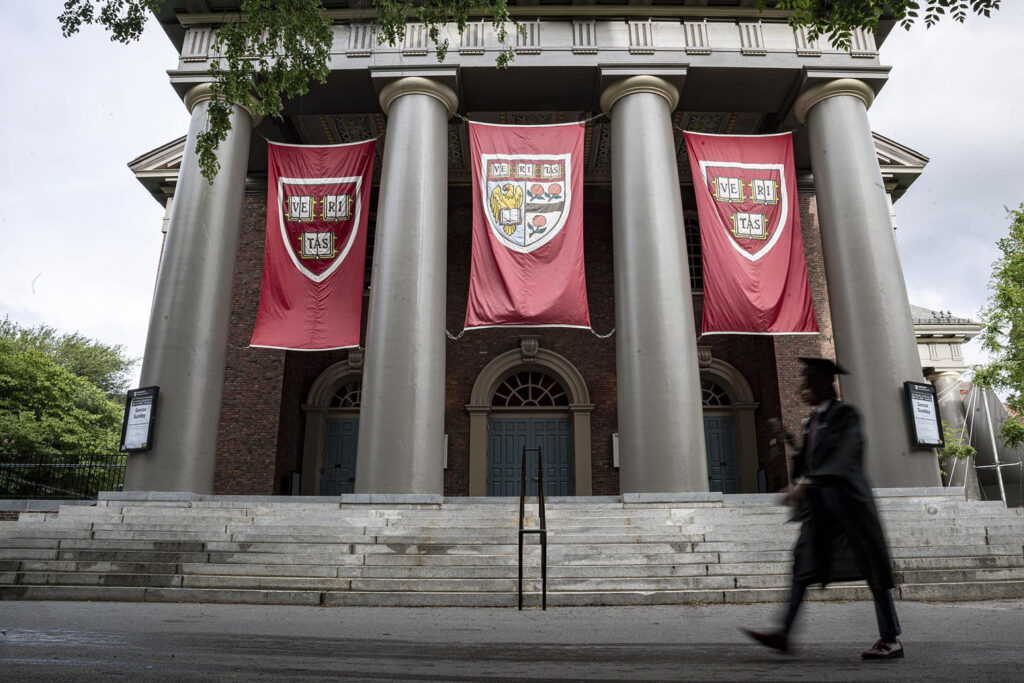Reevaluating the U.S. Approach to International Students and Higher Education Policies
Historically, Harvard University has been a significant recipient of federal funding, including billions in grants and subsidies, while simultaneously facing scrutiny over its admissions practices, especially in light of the 2022 Supreme Court case Students for Fair Admissions v. Harvard. However, recent developments have shifted the landscape dramatically, with the Biden administration taking steps that threaten to reshape international education in the United States.
Federal Funding Cuts and Immigration Restrictions
Under the current administration, Harvard is set to lose all remaining federal grants, marking a significant departure from previous support. More concerning are the broader immigration policies being enacted: the government has announced plans to block international students’ access to U.S. campuses within 30 days and suspend all interviews for foreign applicants, including those on exchange and work visas. Additionally, there is an ongoing review of social media screening processes for prospective students, raising questions about privacy and fairness.
Implications of Restrictive Policies on National Security and Education
Critics argue that these measures are excessive and counterproductive. Over the past five decades, no terrorist attack in the U.S. has been thwarted solely through the kind of invasive background checks now being proposed. Instead, these policies risk targeting students based on their political beliefs or social opinions, rather than genuine security threats. A federal judge recently issued a temporary injunction against the administration’s attempt to bar international students from enrolling at Harvard, highlighting legal pushback against these overreach efforts.
The Significance of International Students in American Higher Education
Currently, over 1.1 million international students are enrolled in U.S. colleges and universities, representing just under 6% of the total 19.1 million students in higher education. According to the 2024 Open Doors Report, a majority of these students-about 56%-study STEM fields, with roughly 25% specializing in mathematics and computer science, and nearly 20% in engineering. These students are vital to the innovation ecosystem, often transitioning from student visas to permanent residency and contributing significantly to the economy and technological advancement.
Success Stories of Immigrant Innovators
Many prominent entrepreneurs and scientists began their careers as international students. Elon Musk, for example, started at the University of Pennsylvania before obtaining an H-1B visa, eventually becoming a U.S. citizen and a leading figure in technology and space exploration. Similarly, Patrick Soon-Shiong, a South African immigrant, completed his surgical training at UCLA and went on to develop groundbreaking cancer treatments like Abraxane. These stories exemplify how international students can become key drivers of American innovation and economic growth.
The Economic and Entrepreneurial Impact of Immigrants
Research indicates that immigrant contributions significantly boost innovation. From 1950 to 2000, a mere 1% increase in immigrant population correlated with a 15% rise in patents per capita. Entrepreneurs among immigrants are particularly prolific, founding companies that generate more jobs and pay higher wages than those started by native-born Americans. Economist Pierre Azoulay’s studies reveal that immigrant-led startups are 80% more likely to introduce new products, and their businesses tend to be more dynamic and employment-rich.
The Consequences of Curtailing Student Visas
While the current policies do not outright ban all international students, they threaten to reduce their numbers substantially by making it more difficult to enter and remain in the U.S. This approach undermines the very goal of attracting top talent and fostering innovation. Canceling or restricting student visas could inadvertently diminish the pipeline of highly skilled immigrants, thereby hampering the nation’s competitive edge in global markets.
Misguided Justifications and Economic Fallouts
The administration has justified these restrictions by claiming that countries with trade surpluses have exploited American generosity. Commerce Secretary Howard Lutnick has stated that the U.S. will no longer be “ripped off” by such nations. However, this perspective ignores the economic reality: international students contribute approximately $50.2 billion annually to the U.S. economy, making them a valuable export. Curtailing visas not only harms this revenue stream but also contradicts the broader goal of fostering international collaboration and innovation.
Geopolitical Concerns and the Future of U.S.-China Relations
Recent announcements, such as the increased scrutiny of Chinese students with ties to the Communist Party, reflect a broader concern about espionage. While national security is important, overly broad restrictions risk alienating talented students from China, who could otherwise contribute to U.S. technological leadership. Sending signals of distrust may backfire, reducing the influx of top-tier Chinese talent and weakening the very innovation ecosystem the U.S. seeks to protect.
Conclusion: Balancing Security and Opportunity
Beyond the immediate issues of immigration and security, the U.S. must recognize that its strength lies in openness and the ability to attract global talent. Restrictive policies that hinder international students and researchers threaten to undermine decades of progress in innovation, economic growth, and global leadership. The Trump administration’s current approach, which emphasizes exclusion over engagement, should be reconsidered to preserve the nation’s competitive edge and uphold its reputation as a hub of knowledge and opportunity.
Alex Nowrasteh is the Vice President for Economic and Social Policy at the Cato Institute.

